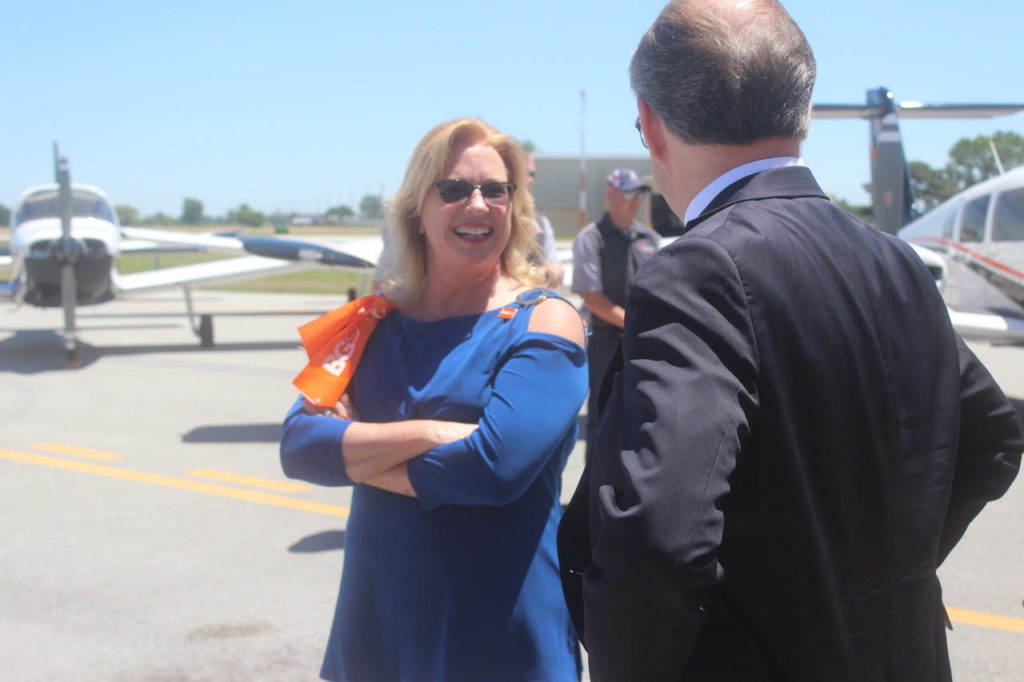By David Dupont
BG Independent News
BGSU trustees on Friday approved the establishment of a school of engineering within the College of Technology, Architecture and Applied Engineering
Trustees also approved the expenditure of $4 million for design services for a new home for engineering and other technology programs.
The college will be reconfigured into three schools – the existing School of the Built Environment, the School of Engineering and Technology and the School of Aviation.
As part of the reconfiguration, three engineering technology programs will be converted to engineering programs.
While technology relies heavily on applied and hands-on training, the move into engineering will add more theory and higher math, said Jennie Gallimore, dean of the college.
Some technical programs, including Visual Communication Technology, will be retained in a division within the School of Engineering. The Masters in Industrial Design and Quality Systems program will also be housed in the division.
The establishment of the school of engineering, Gallimore said, strengthens BGSU’s offerings in an area it had not previously offered. The first engineering program was Systems Engineering, which was established in 2020.
There is a strong demand for engineers in the region, she said, especially in advanced manufacturing.
The creation of the School of Aviation will increase the visibility of this program and allow it to develop in other areas of aviation. BGSU now offers two aviation degrees – Aviation Management and Operations and Flight Technology Operations
Aviation is one of the fastest growing programs at the university.
The cost of the reconfiguration is estimated at $9,000.
Directors also approved the continuation of the design of a new home for the engineering and aviation classroom component.
The original plan called for renovations to the college’s current home, but Sheri Stoll, the university’s chief financial officer, said closer examination of the building, which was built in 1971, showed it needed replacing .
“We passed it,” Gallimore said.
The university has $16 million in state capital funds previously earmarked for this project. The $4 million in design services will come from that. Work will begin immediately and calls for tenders will take place next spring. The new building is expected to be completed in the summer of 2025.
An adjacent car park will be constructed, so the current facility will continue to be used. The existing structure will eventually be razed to create a parking lot.
In addition to labs and classrooms, the new building will house the Center for Advanced Manufacturing and Logistics, Gallimore said.
The renovation and expansion of Kokosing Hall, the former Park Avenue warehouse that houses the School of the Built Environment, is now advancing rapidly, after being delayed due to supply chain issues. The $10.4 million project is expected to be ready for move-in by January.
Trustees also approved $1.6 million to pay for initial planning for the next campus master plan.
The completion of the first master plan was marked on the weekend of the reunion with the dedication of the alumni walkway.
The university is now turning to a new ten-year plan.
Stoll said she expects the projects, which have yet to be identified, would cost up to $200 million. The plan would, she said, involve new construction as well as demolitions.
The other approved construction elements were:
- $621,500 from the Deferred Maintenance Reserve to fund design services to plan and estimate construction services for the Slater Rink renovation. According to information provided to administrators, the project is expected to include upgrades to existing building systems, life safety, accessibility and day-to-day functions; locker room upgrades and washroom renovations; creation of a new mezzanine at the south end of the main ice rink including private suites, concessions and a club room; additional spectator seats; the addition of a 1,000 square foot lobby at the main west entrance; and a renovated main entrance offering better trophy display opportunities.
- $2.5 million to repair the Library Tunnel, a utility conduit that runs down the alley between the Jerome Library and the Palace of Fine Arts. The tunnel, built in 1965, is deteriorating. It contains the main electrical supply, steam, condensate, and domestic water for the Jerome Library, the Wolfe Center, the Moore Musical Arts Center, and the Rec Center. The work includes replacing the rapidly deteriorating tunnel top, pipe supports, interior lighting and repairing the tunnel walls. The project will run for three years.


Commentaires
Enregistrer un commentaire